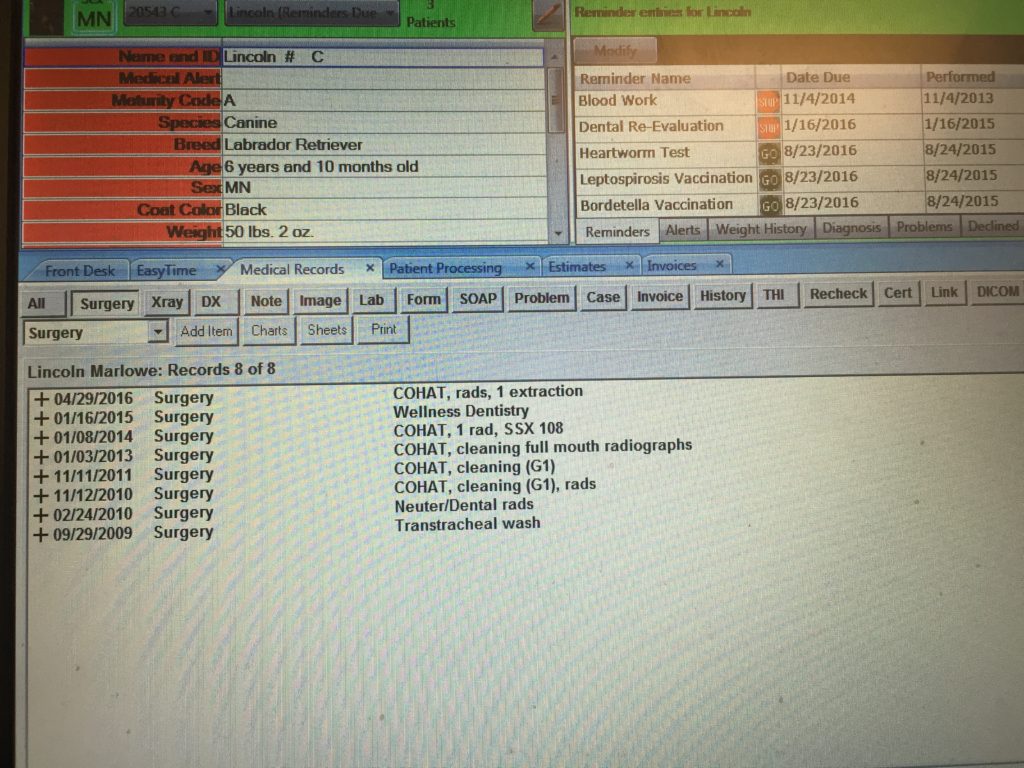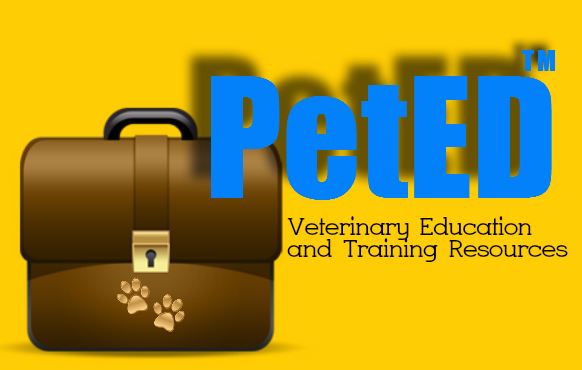By Vickie Byard, CVT, VTS (Dentistry), CVJ
I know that most of my readers are veterinary technicians and not practice managers nor practice owners. That means that most that are reading this do not have “purchase power” within the hospital. However, technicians do have the responsibility to bring back to the practice fresh, new ideas, products, best practices and medical modalities. In this article, I am going to give you a client compliance tool with which I have had great success that you can share with those that do have buying power.
Imagine this scenario: A client brings a dog to your practice with a pronounced lameness. The veterinarian is expected to collect a history, provide a comprehensive exam, evaluate diagnostics, and prescribe therapy for this ailment…all within the scope of a 20 minute office appointment. But, during that complete exam, he/she observes significant periodontal disease. They do mention it and make notes in the medical record. In most cases, there was inadequate time to educate the owner about the importance of treating this oral infection and the care rarely is provided.
I could give you a thousand scenarios, each having the same results. And the lower than desired dental compliance rates are not the veterinarian’s fault, nor the fault of the practice. There just isn’t enough time in most cases. These doctors feel the pressure of getting to the next patient on time. This is happening every day in practices all over this country.
A while back, I came across some important reading material that really stood out with me:
- The AAHA client compliance study reported that there were clear obstacles that kept clients from acting on the dental recommendations provided by the veterinarian. First, the client never heard the recommendation. They were focused on the original reason for the appointment. Secondly, if they heard the recommendation, they didn’t understand the importance of it. Finally, if they heard and understood the importance, so many are afraid of the required anesthesia.
- In the book The Checklist Manifesto, the author tells a story about the first company to produce an antibacterial soap. For marketing purposes, they wanted to be able to show research proving that antibacterial soap kills germs, therefore it will help people from getting sick. They got funding to study two groups in a part of India that was a hotbed of dysentery and cholera. They gave one group soap containing 1.2% Triclocarban and the other group received plain soap without the antibacterial component. However, both groups were given instructions when they were to wash their hands; after they used the bathroom, before they prepared food, before they ate, after changing an infants diapers. The results surprised the company. Both groups had a dramatic reduction in the infection rate equally. It was the education that improved the medical outcomes. Education changes behavior.
So, with these two studies at hand, I approached the leadership at our practice. I proposed that I was willing to give a dental education seminar to clients that the veterinarians invited and I would repeat this monthly. I scheduled these seminars from 7-8:30 pm on a weeknight. The first few seminars had attendance of 3-5 people. That’s when I realized the value of an incentive. So, we discontinued the dreaded “Dental Month” discount and offered a REWARD coupon worth 10% off the next dentistry. The coupon stated clearly that it was a one time, per family only offer. As soon as we offered the discount, my numbers increased. On average, I was getting 12-20 clients per month.
This was so successful, that I started giving the seminar at a satellite practice on another night of the month. Then another practice contracted me to produce a similar experience for their clients. I did this for 7 years. Needless to say, I lost much of my enthusiasm after working clinically full time, then talking teeth to all hours of the night.
That’s when the light went on! I produced the most important points in a webinar series on my website. I created invitations that can be downloaded and printed free of charge from the website. We loaded the exam rooms with these invitations and the clients were invited to go to the website to view the series at home at their leisure. Once the client viewed the videos, they took a short quiz (insuring that they actually listened to the education). Upon correctly answering those 5 questions, the REWARD coupon appeared and they printed it at home and presented it the day of the dentistry. Unlimited clients were able to access this information 24/7 undisturbed at home.

This is what good client compliance in dentistry looks like!
Since April 2014, we have had on average about 12-20 coupons redeemed per month, not just 12-20 people attending the seminar. That is 12-20 additional dentistries scheduled that month.
This has been a win-win for the practice. The practice wins by more efficient exam experiences. The information is consistently delivered. The educated client now knows that providing care earlier is less costly and ultimately safer for the pet. That translates into less stress in the OR because we are spending more time preventing oral disease.
This is a win-win for the client. Earlier dentistries are less expensive and ultimately less traumatic for all involved.
What warms my heart most is that it is a win-win for the pet. Preventive dental care extends the life of that pet and we all know the importance of the human-animal bond.
So, this is not just a nice story about how I changed the face of dentistry in our three practices. This webinar series is now open for subscription to your practice. Numerous practice across the country are already employing it. For as low as $66.67 per month, your practice can have unlimited access to the same ease of educating your clients and increasing compliance to the number one disease affecting your pet population.
Since February is Pet Dental Health Month, I would like to offer you the password for February. As the technician, you can use this password to bring this valuable tool to the people with purchase power in your practice. Or, you can use the webinar series as an educational tool for staff during a staff meeting this month. Or, just maybe your practice would like to take a test run.
If you would like the password, contact me by email (Gr8vettek@aol.com) and I will provide it free of charge.
*If any of this information was useful or you would like to see similar content, “LIKE” the Pet ED Veterinary Education and Training Resources Facebook page and subscribe on the HOME page of the PetED website to receive upcoming newsletters and news. If you feel friends or colleagues would benefit from or enjoy this article, feel free to share on YOUR Facebook page.


